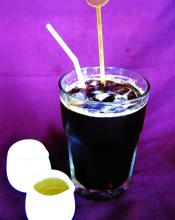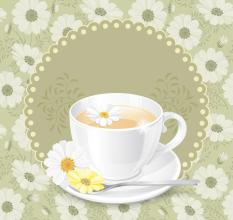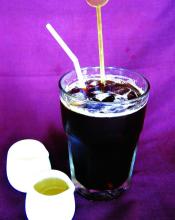Indonesian coffee producing areas with very rich coffee growing environment introduce Mantenin coffee.
From the blue Blue Batak in Lake Toba, north of Sumatra, there are other stories to tell:
Blue Batak is named after the Batak, the aboriginal people of northern Sumatra. The Batak people mainly believe in Christianity. In fact, it is the mother descent of the "Mandenin" clan. It was also mentioned in the Coffee Science that Sumatran coffee is generally known as "Mantenin". In fact, it should be renamed "Batak". However, historical factors have accumulated.
The area is flat, about 1550-1650 meters above sea level, and the soil fertility is moderately rich in organic matter. Most coffee trees are shaded and planted. Traditionally, shade trees can maintain moisture and increase soil fertility. Most coffee women carry out weeding and fertilization with their bare hands, and coffee cherries are harvested and removed artificially when they are ripe. The wet pods are placed in a plastic bag and fermented for 10-12 hours, and then the pectin, floats and shells are removed manually, rarely using a machine. Unlike Central and South America, Indonesian coffee beans are unique semi-aqueous method, which is also the local Bhatta traditional wet peeling method (wet-hulled), which the locals call Giling Basah. (with regard to wet peeling, the hand of Hope will be described in more detail.)
It has the sweet aromas of peach, licorice, tobacco, cinnamon and sugar cane, while the bitter taste is similar to that of grapefruit peel, mild and low acidity, distinct layers, lively acid value and rich alcohol thickness. High complexity, clean and clear, typical Indonesian bean flavor, changed to the last grape sweet after cooling time, from the recommendation of Coffee Review:
The hand of Hope in Lake Tawa, Indonesia.
Lake Tawa is located in the mountains of Gayo, north of Aceh province in Sumatra, which straddles Indonesia on both sides of the year. The humid rainforest climate is rich in rainfall and fertile volcanic soil brings rich nutrients to coffee. However, due to the remote location and inconvenient transportation, it was not until 1924 that coffee was grown. Most of the local farmers adopt organic cultivation with traditional shade and no pesticides.
The local climate is humid, after preliminary washing and fermentation, after one or two days of exposure, although the moisture content of raw beans is still 30%, 50%, immediately peel off the seed shell and then continue to dry, in order to shorten the drying time of raw beans. After about 2 days of drying, the moisture content of raw coffee beans can be reduced to 12% Mel 13%. This unique semi-washing method in Indonesia is locally known as Giling Basah, also known as wet removal (wet-hulled).
The medium-to-deep roasting of this coffee bean is characterized by charming herbal aromas, baked toast, nuts, post-rain grass, spice pine wood, and caramel cream.

Important Notice :
前街咖啡 FrontStreet Coffee has moved to new addredd:
FrontStreet Coffee Address: 315,Donghua East Road,GuangZhou
Tel:020 38364473
- Prev

Introduction to the planting environment of Salvadoran coffee flavor producing area with balanced taste and good texture
Flavor: balanced taste, excellent texture suggested baking method: medium to deep, there are many uses of high-quality beans: El SHB taste characteristics: sour, bitter, sweet mild and moderate. Salvadoran coffee ranks side by side with Mexico and Guatemala as the producers of Asa and Merdo, and is fighting for the top one or two places in China and the United States with other countries. The highland of origin is equal in size and size.
- Next

Introduction of Rwandan coffee beans with high altitude mountain coffee growing environment
Rwanda's economy is dominated by agriculture. The population engaged in agriculture and animal husbandry accounts for 92% of the country's population. The main cash crops are coffee, tea and cotton. Because it is an agricultural and animal husbandry country, coupled with the loss of many young workers caused by the genocide in 1994, it is a huge blow to a country that is not already rich, and Rwanda is still a backward country. Lu after the Civil War
Related
- Detailed explanation of Jadeite planting Land in Panamanian Jadeite Manor introduction to the grading system of Jadeite competitive bidding, Red bid, Green bid and Rose Summer
- Story of Coffee planting in Brenka region of Costa Rica Stonehenge Manor anaerobic heavy honey treatment of flavor mouth
- What's on the barrel of Blue Mountain Coffee beans?
- Can American coffee also pull flowers? How to use hot American style to pull out a good-looking pattern?
- Can you make a cold extract with coffee beans? What is the right proportion for cold-extracted coffee formula?
- Indonesian PWN Gold Mandrine Coffee Origin Features Flavor How to Chong? Mandolin coffee is American.
- A brief introduction to the flavor characteristics of Brazilian yellow bourbon coffee beans
- What is the effect of different water quality on the flavor of cold-extracted coffee? What kind of water is best for brewing coffee?
- Why do you think of Rose Summer whenever you mention Panamanian coffee?
- Introduction to the characteristics of authentic blue mountain coffee bean producing areas? What is the CIB Coffee Authority in Jamaica?

